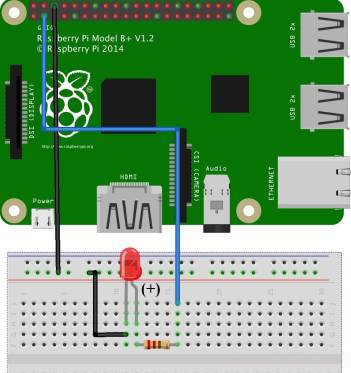$ sudo chmod 755 ledblink.py
You can check out the connection diagram below to do that:

The LED blinks because it receives a HIGH (5V) signal and a LOW (0V) signal from the Raspberry Pi GPIO at a delay of one second.$ sudo python ledblink.py
$ sudo chmod 755 ledblink.py

The LED blinks because it receives a HIGH (5V) signal and a LOW (0V) signal from the Raspberry Pi GPIO at a delay of one second.$ sudo python ledblink.py